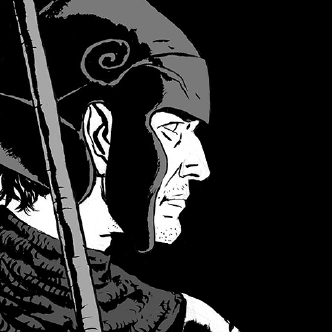Soylent Green – Five reasons to watch it now
- Jarek Kupść

- Mar 19, 2020
- 3 min read
Updated: Mar 24, 2020
First: Soylent Green (1973) it is a neo-noir/future-noir crime thriller. Meaning, it uses tropes and archetypes of film noir, starting with a tired detective on a seemingly hopeless case. It has false leads, multiple betrayals, and conspiracies. The worldview it offers goes far beyond disillusionment.

Second: the film contains a social and environmental message we should all heed. Soylent Green features a dystopian future, which accurately predicts that social class divisions will only increase after a global industrial and agricultural meltdown. The poor vs. rich gap will only widen, with the rich finding a solution to keep the working class (the poor) alive, but just barely, to provide the needed workforce. The only real, non-processed food will be available to the elites, who control a limited, organic farming infrastructure.
Third: it gives Charlton Heston a role of his lifetime. He plays a past-his-prime, seen-it-all, skeptical cop who stumbles upon a major conspiracy. His sleuthing not only up-ends his own residual belief in humanity, but also shatters any notions of free will. Heston delivers here his best performance in a long career of good, some great, outings. In Soylent, long gone are his Biblical posturings. This a Heston abandoned by God. He plays Thorn as an atheist: a cynical bastard who can be an opportunist and an efficient cog in the system designed to protect the elites. That cynicism is, no doubt, a carry-over from Planet of the Apes (1968) and The Omega Man (1971) – both forming the first two panels of the Armageddon triptych bracketed with Soylent Green. Whatever you make of his politics, Heston was ahead of the curve on environment and social inequality.

In Soylent, the always-sweaty Thorn is the audience surrogate. It is through him we discover how the rich live, and what the rest of humans are reduced to. A been-there, seen-it-all tough guy Thorn doesn’t even flinch at the homeless dwellers and dying mothers – his eyes widen at a prime-cut steak. It is not easy to play it cool as Heston does, to make you believe that Thorn came of age without sunshine and vegetables, and licks a spoonful of strawberry jam for the first time in his life. His reactions to the fresh experiences are always new, as much as his disdain for the surrounding misery is old.
And then there is that famous last line, absent in the book, which makes all the difference. Heston, no stranger to Shakespeare, delivers it with a beautiful mixture of horror and scorn. It is a flawless performance in a flawless film.

Fourth: Edward G. Robinson in his last role as a sage yearning for dignity on a planet reduced to Darwinian survival. Watch the scene when Robinson’s character enjoys a fresh beef stew after a diet of processed food, and you will understand what we, as a species, are facing if we don’t reconfigure our ways with the environment. Watch Robinson reacting to his last wishes projected onto a movie screen and you will, possibly, decide that, hey, we really do need to save this forsaken planet after all (if you still need any push in that direction). Edward G. Robinson is the soul of Soylent Green.
Fifth: the ending – altered and improved from the one in the book (Make Room! Make Room! by Harry Harrison). If you don’t know it yet, it will shake you just in the proper, hard-core way. If you do know it, you will still watch the film hoping they changed the ending just to preserve your peace of mind (they haven’t).
All in all, Richard Fleischer's Soylent Green is one of the greatest sci-fi films ever made. Because the science it portrays, social and physical, is quickly becoming less of a fiction.

I also recommend a few follow-ups:
Z.P.G. (1971 – Zero Population Growth, based on The Population Bomb) – Geraldine Chaplin and Oliver Reed refuse to cradle an animatronic baby from "Babyland,” shot in Denmark without a hint of hygge. A true Scandi-horror.
The Ultimate Warrior (1975 – not based on a book) – written and directed by the man who brought us Enter the Dragon, Robert Clouse, with an eerily fit 55-year-old Yul Brynner protecting Max von Sydow’s urban farmers from a mean, hungry mob after a global pandemic. This is decisively a B movie with A-list actors. For an exploitation film, it contains some surprisingly relevant concepts about growing food on barren city soil, when competition for organic plant life is lethal. The very first unadulterated dystoplation film.
For good measure, juxtapose The Panic in Year Zero! (1961) with The Day the Earth Caught Fire (1961) to compare American attitudes toward apocalypse with the British…



Comments